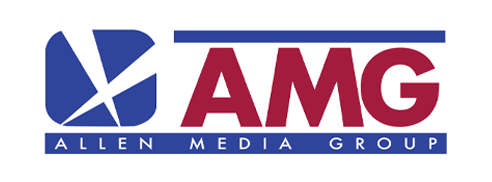
23 Oct Byron Allen on TVNewsCheck Panel: TV Group CEOs Bullish On Core Recovery, M&A Pickup In ’21
The chief executives of E.W. Scripps, Sinclair, Graham Media and Allen Media see brighter days coming in 2021 with the prospect of the Supreme Court quashing outdated ownership rules and M&A activity heating up, along with core advertising bouncing back from the pandemic. Read the story and/or watch the full video above.
Imagine a world in which a new presidential administration helps to promulgate a less toxic environment for local TV journalists; where the Supreme Court loosens broadcast TV ownership rules, ushering in a new era of mergers and acquisitions; and where stations defy the negative views of Wall Street with a rise in revenue from core advertisers and new business opportunities.
Those possibilities are in the sightlines of four TV station group leaders who discussed their visions for the future during TVNewsCheck’s TV2025 Monetizing the Future conference on Wednesday.
In speaking of M&A activity during the current year, Adam Symson, president and CEO of E.W. Scripps Co., said: “I kind of expected it to be a quiet year, given the election. People like to reap the rewards of their portfolio.” He referred to the tsunami of political advertising revenue stations are currently enjoying from the record-breaking campaign cycle.
The M&A situation is likely to change in 2021. “I’m sure we’re going to see things heat up a little more once we get past this pandemic,” said Emily Barr, president and CEO of Graham Media Group.
Chris Ripley, president and CEO of Sinclair Broadcast Group, added: “I agree with that. Also, the Supreme Court reviewing the [FCC ownership] rules is big. That’s probably not going to happen until next summer. But it’s an opportunity to get out of this spin cycle that we’ve been in with the Third Circuit. And that could be a real catalyst for M&A, outside of just exiting the pandemic.”
Ripley referred to the three-judge panel of the U.S. Court of Appeals for the Third Circuit, which hears cases arising in New Jersey, Pennsylvania and Delaware. For nearly two decades, the same three judges have reviewed every attempt by the FCC to revise its broadcast ownership rules. And two of the three have consistently blocked the FCC’s ownership-relaxation efforts.
Earlier this month, the Supreme Court agreed to hear an appeal by the FCC that could ultimately loosen restrictions on a company’s ability to own a TV station and newspaper in the same market.
A favorable decision could lead to even further relaxation, said Byron Allen, chairman, founder and CEO of Entertainment Studios and Allen Media Broadcasting. “I think the broadcast industry has a very good chance to lift the [ownership] cap, because it goes back many, many years — long before we had internet and streaming. And there’s plenty of competition,” he said.
Today, station groups are restricted from reaching no more than 39% of all U.S. TV households. However, UHF stations count as 50% toward the cap while VHF stations count as 100%. “Right now, [the cap is] 65% with discounts. You don’t need a UHF discount anymore. You just take the gloves off and say it’s 65% or 75% of the country,” Byron added.
Michael Depp, TVNewsCheck’s editor, who served as moderator, asked the panelists about the implications if Joe Biden becomes the next U.S. President. From a regulatory standpoint, “I don’t think it will mean all that much, in terms of where we are today. The priorities of an FCC in a Biden administration would be in other key areas, like net neutrality. And the case for firmer, or harder, regulations in the industry really just isn’t there,” said Sinclair’s Ripley.
“I don’t think a Biden FCC will loosen things, but they don’t really need to if the Supreme Court follows through with what’s already been put on the books,” Ripley added.
Barr said she isn’t entirely sure a Biden FCC won’t impose new restrictions. “But I will say that that is something I’m willing to accept if we can try to put a stopper on the historic assault on journalism that we’ve witnessed over the last number of years.” (For more on this issue, click here.)
The four executive panelists also reacted to Wall Street’s generally pessimistic outlook on TV stations. “There’s always a bogey man around every corner when you talk to a [broadcast TV] investor. Given the business disruption we’ve experienced, the broadcast business has been pretty darned durable,” said Scripps’ Symson. “Core advertising has bounced back. As the economy has rebounded, so has demand for our advertising.”
The panelists see further growth ahead for such sectors as automotive, health care, home improvement and online sports gambling.
What’s more, “the cord cutting that we’ve observed is typical of a recession as people look to tighten their belts. We don’t expect those trends to continue on the same course as we enter the recovery after the COVID recession,” Ripley said.
“The Street is giving us no credit for our myriad of growth opportunities, which are having a much more near-term impact. NextGen TV is actually happening now,” Ripley added. He also referenced over-the-top platforms, like Sinclair’s STIRR and its NewsOn service, that many station groups use to deliver local news, along with a headline news service Sinclair is planning to roll out in the first quarter.
Yet despite all the actual or expected progress the panelists foresee, they also see room for more improvements — most notably in the area of diversity. Allen noted that he is a “Black unicorn,” as the only African American who runs a company with Big 4 TV network affiliates. There are lots of African Americans with the intellect and desire to own network affiliates, but they don’t have access to capital and run up against advertising roadblocks set up by Madison Avenue companies, he said.
“I think the U.S. government should bring back the minority tax [incentives], which encourage people to sell their broadcast assets to minorities so we can have greater diversity,” Bryon said. The revival of the Minority Tax Certificate Program would offer tax breaks to companies that sell their radio or television stations to minority-owned groups.
The need for diversity extends to the workforce, and it’s something all the panelists said they are working on. “To Byron’s point, the best thing we can do is to have a very, very wide variety of voices at the table,” Barr said. “We will have an explosion of ideas and creativity if we bring more people into the mix.”

 Read the full article here.
Read the full article here.
